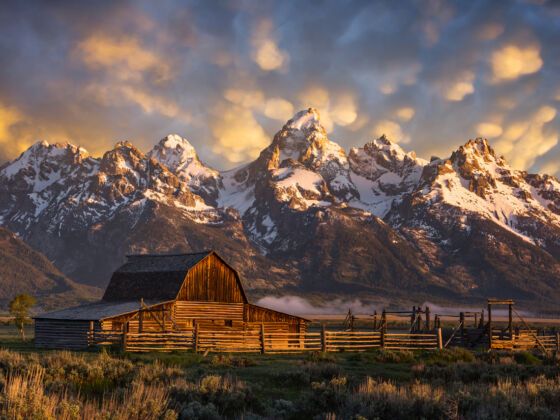The other morning in Antelope Flats, I watched two female moose peacefully munching on the grasses. Aside from the Mountain Bluebirds diving in and out of the sage, I had the scene to myself. I took in the solace of such an untouched land, that a place still exists where wildlife can go about their days without human interference. It’s hard to stand anywhere in this park and not appreciate the foresight Teddy Roosevelt, John D. Rockefeller, and Horace Albright had in permanently protecting this land. I imagined what would be left to see if instead a few million dollar vacation homes stood where those moose were feeding, undisturbed in the translucent, pre-dawn light. This land is a gift from past generations to all of us. My heart aches at the thought of future generations not being given the chance to see a fox jump above the sage as it hunts, to never feel their heart race at the sight of a wolf pack taking down an elk and to have this sweet silence buried underneath human noise.

Why a Portion of the Grand Teton National Park Is at Risk of Development (and How You Can Help)
Grand Teton National Park is the southern anchor of the Greater Yellowstone Ecosystem, the largest relatively intact ecosystem in the temperate zone left on earth outside of Alaska. Together with the six National Forest Service lands surrounding both Grand Teton and Yellowstone national park, it forms the largest continuous stretch of public lands in the lower 48. The Teton Range itself stands apart, distinguishable from any other mountain range in the world, cutting stacks that rise like tidal waves where the grasslands end.
Today, Grand Teton National Park faces risk of development within a 640-acre, state-owned parcel in the very spot those moose stood, an area known as Antelope Flats. The parcel lies within the elk, bison, and pronghorn migration routes and habitats. Just outside the parcel borders lie the most productive sage-grouse lek in the region, a coyote den, and a wolf den.
The State of Wyoming would like to sell it to the National Park, but the Park simply lacks the resources for purchasing it. National Parks were set aside to be protected from exactly this. If the funding to purchase this land is not secured by the end of the year, it is subject to potential development as the State of Wyoming has a constitutional obligation to earn income on the parcels. As of now, The Grand Teton National Park Foundation has reached $12 of its $23 million dollar fundraising goal. We have an opportunity to save this piece of land; donations are being accepted here. We must not allow this special place to be lost to senseless development in such a rare, pristine pocket of the sprawl that lies outside it. We must demonstrate that these lands are more valuable — for creatures both of the two and four-legged kind — than what money could ever buy.